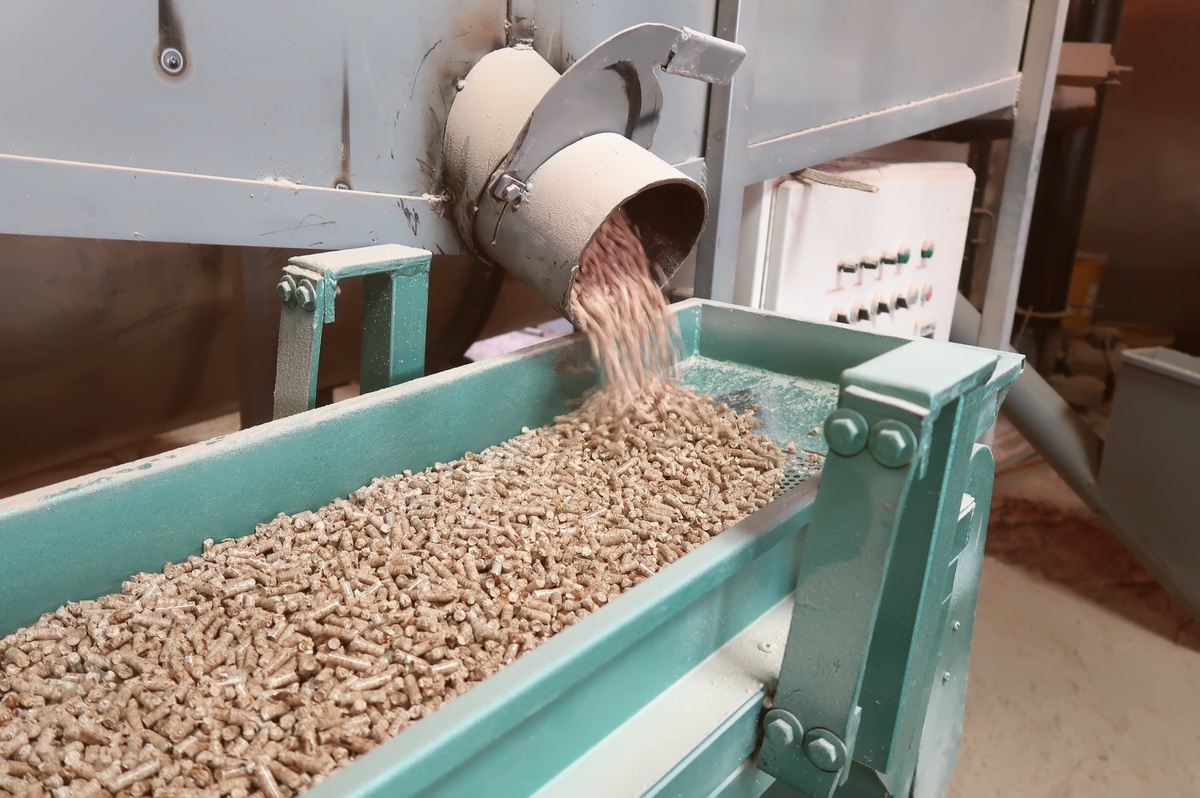Best Guide To Wood Pellets

Wood pellets are usually a popular and even sustainable source of power, widely used for non commercial heating, commercial software, and even electrical energy generation. This complete guide covers anything you need to know about wood pellets, coming from production to uses and environmental effects.
Table of Items:
Introduction to Wood Pellets
Definition plus Make up
History plus Evolution of Solid wood Pellets
How Wooden Pellets Are manufactured
Natural Material Assortment
Manufacturing Process
Quality Specifications
Characteristics of Solid wood Pellets
Size and Shape
Thickness
Moisture Written content
Calorific Value
Benefits associated with Working with Wood Pellets
Alternative and Sustainable
Co2 Neutrality
Waste Decrease
Energy Performance
Cost-Effective
Environmental Effects
And also carbon Footprint
Greenhouse Petrol Emissions
Air Quality
Wooden Pellet Apps

Home Heating
Commercial and even Industrial Heating
Energy Generation
Other Employs (e. g., dog bedding)
Pellet Stoves and Boilers
How Pellet Stoves Function
How Pellet Boilers Work
Advantages and even Considerations
Pellet Manufacturing and Sector
Worldwide Production Review
Major Producers and Exporters
Industry Styles
Quality Assurance and Documentation
Pellet Certification Courses
Importance of Top quality Assurance
Storage and Handling
Proper Storage Conditions
Handling and even Transport Suggestions
Pellet Storage Protection
Choosing a Wood Pellet Supplier
Factors to Consider
Questions to Ask
Local and Eco friendly Options
Comparisons along with Other Fuels
Wooden Pellets vs. Fossil Fuels
Wood Pellets or Other Biomass Powers
Common Challenges plus Solutions
Supply Sequence Challenges
Regulatory Conformity
Technological Advancements
Long term Trends and Innovations
Technologies
Sustainable Techniques
Market Growth and Growth
Conclusion
Summarize of Key Factors
The Role of Wood Pellets on Sustainable Power
Advantages to Wood Pellets
Definition and Formula:
Wood pellets are usually small, cylindrical pellets made from squeezed wood particles, commonly sawdust or wood shavings. These pellets are widely-used as the source of heat in residential and even commercial settings, along with various industrial software.
History and Advancement of Wood Pellets:
The application of wood pellets as being a fuel supply goes back to the 1970s. Over time, improvements in pellet manufacturing technology, along with a new growing awareness of environmental issues, experience led to increased popularity and widespread adoption of wood pellets being a renewable energy solution.
How Wooden Pellets Are produced
Natural Material Selection:
Typically the production of wood pellets begins along with the selection of uncooked materials, which will be usually byproducts regarding the wood processing industry. Common options include sawdust, wood shavings, and wooden chips.
Production Method:
Drying: Recycleables are dried up to lessen moisture articles, crucial for successful pelletization.
Size Lowering: The dried wooden is ground directly into a fine powdered to increase surface area.
Pelletization: High pressure and heat are really used on compress the wood powder straight into pellets.
Cooling and Screening: Pellets are generally cooled and processed through security to get rid of fines and even ensure uniformity.
Product packaging: The final step involves packaging the particular pellets for circulation.
Quality Standards:
Several quality standards plus certifications ensure typically the consistency and efficiency of wood pellets. Certifications like ENplus and Pellet Energy sources Institute (PFI) documentation guarantee adherence in order to specific standards.
Qualities of Wood Pellets
Size and Condition:
Wood pellets commonly have a dimension of 6 millimeters and a length of twelve to 30 millimeters, making them homogeneous for efficient combustable.
Density:
Wood pellets are dense, using a high energy articles, causing their efficiency like a heating gas.
Moisture Content:
Top quality wood pellets have low moisture content, typically around 6-8%, ensuring efficient combustion.
Calorific Value:
Real wood pellets have a new high calorific worth, releasing a significant level of heat any time burned. The exact value depends on wooden species and production processes.
Benefits of Making use of Wood Pellets
Renewable and Sustainable:
Wood pellets are made from biomass, a new renewable resource. Sustainable forestry practices ensure a continuous offer.
Carbon Neutrality:
Typically the carbon dioxide released in the course of pellet combustion is usually offset by the carbon dioxide soaked up by trees in the course of growth, making wooden pellets carbon-neutral.
Squander Reduction:
Wood pellets use wood residues and byproducts, minimizing waste in the wood processing business.
north west wood pellets :
Great energy density plus efficient combustion contribute to the effectiveness of wood pellets as being a heating energy.
Cost-Effective:
In regions with abundant solid wood resources, wood pellets may be cost-effective, in addition to stable pricing aids budget planning.
Environment Effects
Carbon Footprint:
Wood pellets possess a lower co2 footprint compared to fossil fuels, contributing to climate change minimization.
Greenhouse Gas Exhausts:
Reduced greenhouse gas emissions result coming from burning wood pellets, supporting cleaner strength use.
Air Quality:
Contemporary pellet stoves in addition to boilers produce decrease particulate emissions, boosting indoor and outside air quality.
Solid wood Pellet Applications
Household Heating:
Pellet ranges and boilers give efficient and thoroughly clean heating for houses, offering an alternative to traditional heat methods.
Commercial and even Industrial Heating:
Solid wood pellets bring heating in larger-scale apps, including businesses, universities, and production facilities.
Electrical power Generation:
Some influence plants use wooden pellets like a biomass fuel for electrical energy generation.
Other Utilizes:
Wood pellets are utilized as bedding material in cultivation and poultry farming, providing a clear and absorbent solution.
Pellet Stoves and even Boilers
How Pellet Stoves Work:
Pellet stoves use a computerized feeding system to deliver wood pellets to a combustion chamber, where they are ignited in order to produce heat.
Just how Pellet Boilers Operate:
Pellet boilers run similarly to pellet stoves but are designed for central heating systems in homes or larger complexes.
Advantages and Considerations:
Pellet stoves plus boilers offer automated operation, efficiency, in addition to reduced emissions although require proper preservation.
Pellet Production plus Industry
Global Creation Overview:
The global production of real wood pellets has increased significantly, driven by growing with regard to lasting and alternative energy.
Major Producers and Exporters:
Countries just like the Usa States, Canada, and Europe are main producers and exporters of wood pellets, contributing to the international market.
